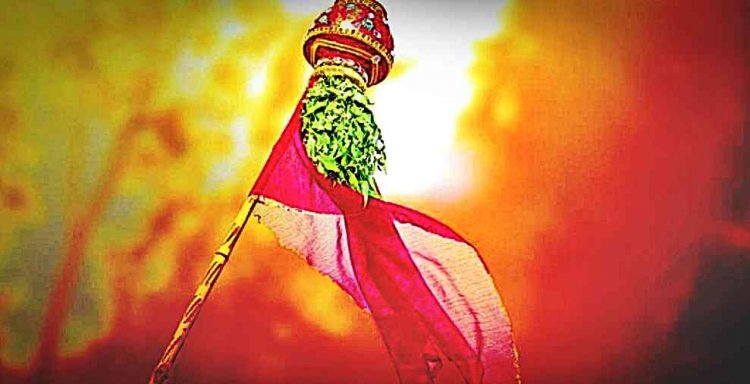Know All About Gudipadwa

Gudi Padwa is an Indian festival that marks the beginning of the New Year and the harvest season for the people of Maharashtra. Gudi is the word used to refer to Brahma’s flag (which is hoisted on this day) while Padva is derived from the Sanskrit word Paddava or Paddavo which refers to the first day of the bright phase of the moon.
This day is also symbolic of the season of Vasant or spring in India. Besides Maharashtra, it is also observed under different names in Andhra Pradesh, Karnataka and Tamil Nadu as well, however by a smaller community of people.
One of the sacred texts of the Hindus, the Brahma Purana states that Lord Brahma recreated the world after a raging deluge in which all time had stopped and all the people of the world, destroyed. On Gudi Padva, time restarted and from this day on, the era of truth and justice (known as Satyug) began. Therefore, Lord Brahma is worshipped on this day.
For the people of Maharashtra, there is an added significance to this festival. It is believed that Chhattrapati Shivaji Maharaj, celebrated leader of the Maratha clan, led the troops to victory and attained freedom for the kingdom from the dominion of the Mughals in that area. The Gudi then is a symbol of victory and prosperity.
Preparation of the Gudi:
The Gudi is made by purchasing a bright green or yellow silken cloth with a zari brocade on it and tying it on to a long bamboo stick. On top of the cloth then, neem leaves, gathi (a Maharashtrian sweet preparation), a garland of red or yellow flowers and a twig with mango leaves are also tied. This stick with the various ornaments is topped off with an inverted silver or copper pot. The Gudi is placed either at the gate or outside the window.
Rangoli is one of the most popular and quintessentially Indian forms of decorating the house during auspicious Hindu festivals. The ground around the Gudi is decorated with an elaborate Rangoli made by using powdered color, flowers and petals and is a much awaited ritual in the households celebrating this festival.
The hoisting of the Gudi is the most important ritual of this celebration. After it is erected, people offer prayers to Lord Brahma. The locality comes together at this point to perform a special ritual, which is the breaking of a coconut kept in the Gudi by forming a human pyramid, by only men and adolescent boys. This structure is scaled by one man or boy climbs to break the fruit. Special food is prepared on this day including a sweet known as Shrikhand that is consumed with a type of Indian bread known as Poori. Other special dishes include Pooran Poli also known as sweet Indian flatbread, Soonth Panak and Chana.
Gudi Padwa is a festival celebrated with much fervor in the Western and Southern India and some parts of East India as well. It is known as Ugadi in Andhra Pradesh, Yugadi in Karnataka, Bihu in Assam and Poila Baisakh in West Bengal. Other communities such as the Konkanis and Sindhis observe it under the names Sanvsar Padvo and Cheti Chand, respectively.
With that, we hope to pour in more concrete importance in your preparations! Celebrate well!















































